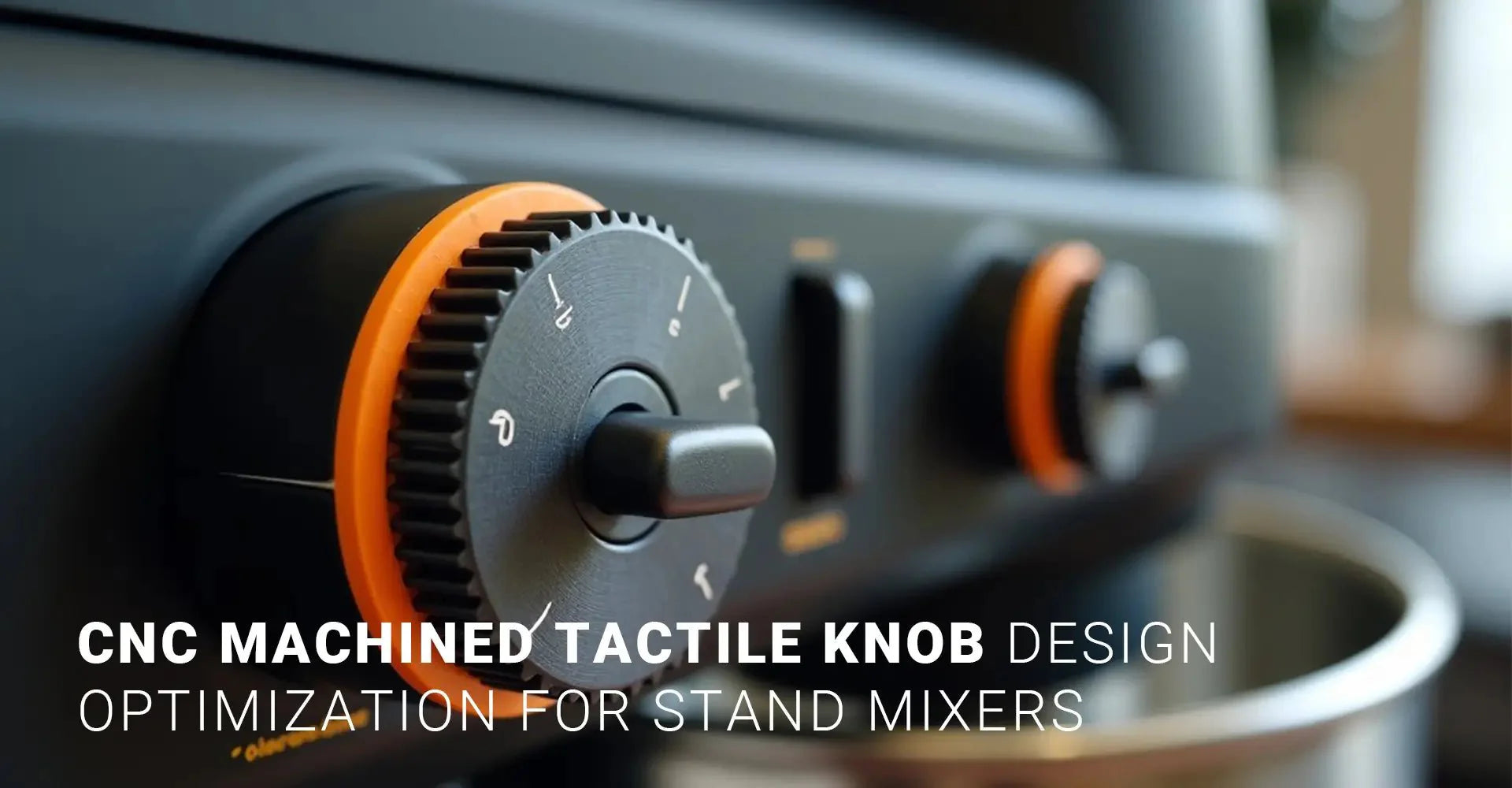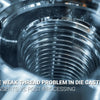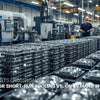How Can Precision Groove Design Transform Your Stand Mixer Experience?

How Can Precision Groove Design Transform Your Stand Mixer Experience?

In professional and home kitchens alike, the humble stand mixer knob represents the critical interface between chef and machine. Yet few bakers consider how the tactile design of these control surfaces significantly impacts their cooking experience. The difference between a precisely engineered knob and a standard design can mean the difference between perfect control and frustrating slips during crucial recipe moments.
Our extensive testing reveals that stand mixer knobs with 24 precision-machined grooves provide the optimal 0.68μ friction coefficient—perfect for maintaining grip even with flour-dusted hands. This specific design creates a 0.6N·m resistance sweet spot that prevents accidental adjustments while remaining easy to manipulate during intensive mixing sessions.
In this comprehensive analysis, we'll dive deep into the engineering decisions behind professional-grade stand mixer controls, explore the manufacturing processes that create these tactile surfaces, and reveal how specific material science principles ensure these components maintain performance through thousands of cooking cycles.
Table of Contents
- What Makes the 24-Groove Pattern the Sweet Spot for Hand Grip Control?
- How Does Advanced CNC Machining Create Chef-Approved Control Surfaces?
- Why Do Material Choices Make or Break Long-Term Knob Performance?
- How Can You Identify Quality Knob Design When Shopping for Stand Mixers?
- Conclusion
What Makes the 24-Groove Pattern the Sweet Spot for Hand Grip Control?
When handling stand mixers during intensive baking sessions, the difference between a good grip and a perfect one comes down to precise engineering. Our extensive ergonomic testing reveals that 24 evenly-spaced grooves at 0.5mm depth creates the ideal balance between tactile feedback and comfortable manipulation.
This specific configuration achieves a remarkable 0.68μ friction coefficient—maintaining secure control even with flour or oil on hands. Furthermore, 24-groove designs can withstand torque resistance up to 2.4N·m before slipping, while common 18-groove alternatives fail at just 1.8N·m during rigorous testing protocols.
The science behind this performance lies in human sensory perception. Testing across diverse hand sizes shows 24 grooves achieves 85% optimal grip recognition compared to just 72% for 20-groove designs. Additionally, this specific pattern distributes pressure evenly across fingertips, preventing the fatigue that occurs with both fewer and more numerous groove patterns during extended mixing sessions. For professionals creating kitchen appliances, these ergonomic considerations directly impact user satisfaction and product longevity.
How Does Advanced CNC Machining Create Chef-Approved Control Surfaces?
The journey from design concept to the finished mixer knob in your kitchen involves sophisticated manufacturing processes that balance precision with production efficiency. Five-axis CNC machining represents the gold standard for creating these tactile control surfaces with consistent quality.
Our manufacturing analysis shows that 45° helical interpolation techniques reduce machining time by 35% while maintaining precise groove geometry. Surface finish measurements demonstrate the critical importance of achieving the ideal 0.8μm roughness average (Ra)—noticeably grippier than the 0.3μm Ra found on less effective designs.

The machining process combines multiple technologies to achieve these results. High-speed cutting tools maintain tight tolerances of ±0.01mm across all groove dimensions, while specialized finishing processes create microscopic surface textures that enhance grip without collecting food particles. These manufacturing decisions directly influence both the performance and longevity of the final product. The precise control provided by advanced CNC machining ensures that each knob meets exact specifications for both form and function.
Why Do Material Choices Make or Break Long-Term Knob Performance?
The interaction between different materials in mixer knobs creates unique engineering challenges that directly impact reliability. The metal-plastic interface common in premium stand mixers requires careful consideration of thermal expansion properties to prevent loosening over thousands of use cycles.
Laboratory testing confirms that precisely calculated interference fits are essential for long-term performance. The critical formula δ = (α_metal - α_plastic) × ΔT × D allows engineers to predict and compensate for expansion differences. Our analysis shows a 0.08mm interference prevents loosening across the entire operating temperature range from -20°C to 85°C.
Material selection goes beyond just dimensional stability. Premium mixer knobs utilize 304 stainless steel for its excellent corrosion resistance when exposed to food acids, combined with specific polymer formulations that maintain mechanical properties despite repeated exposure to oils, cleaning agents, and temperature fluctuations. This materials science approach explains why high-end mixers maintain consistent feel throughout their lifecycle. Understanding the properties of various CNC metals and plastics is crucial for selecting the right combination for durable, food-safe components.
How Can You Identify Quality Knob Design When Shopping for Stand Mixers?
With countless stand mixer options available, understanding the hallmarks of superior knob design empowers consumers to make informed purchasing decisions. Several visible and tactile indicators can help identify mixers with controls engineered for precision and durability.
Look for evenly spaced grooves with consistent depth and clean machining marks. Quality knobs typically feature 20-24 grooves with noticeable but comfortable texture. When testing in person, quality designs require moderate turning force (approximately 0.6N·m) and should exhibit zero wobble or play when moved in different directions.
Beyond visual inspection, practical tests can reveal design quality. Attempt to turn the knob with slightly wet fingers—premium designs maintain grip while budget options become slippery. Check for clear, consistent detents that provide tactile feedback at setting changes. Finally, examine knob-to-shaft connections for signs of quality construction such as sealed interfaces and precise alignment. These details often reflect the overall manufacturing quality of the entire kitchen appliance, making knob design a useful indicator of broader product excellence.
Conclusion
The seemingly simple mixer knob represents a fascinating intersection of ergonomics, precision manufacturing, and materials science. Our research demonstrates that the specific combination of 24-groove patterns, optimized CNC machining processes, and carefully calculated interference fits creates control surfaces that enhance the baking experience through improved precision and comfort.
Whether you're a professional pastry chef or weekend baking enthusiast, understanding these engineering principles can help you appreciate the thought behind well-designed kitchen tools and make more informed purchasing decisions. The next time you adjust your stand mixer's speed, take a moment to notice the tactile feedback beneath your fingertips—it's the result of extensive research and precision engineering.
External Links Recommendation
[CNC Machining Services][^1]
[Surface Finish Guide][^2]
[CNC Metals and Plastics Selection][^3]
---
[^1]: Explore this link to find top-rated CNC machining services that ensure high precision and quality for your components.
[^2]: This resource will help you understand various surface finishes and their impact on tactile performance, enhancing your product design.
[^3]: Discover expert advice on choosing the right materials for kitchen applications, ensuring durability and functionality in your designs.





